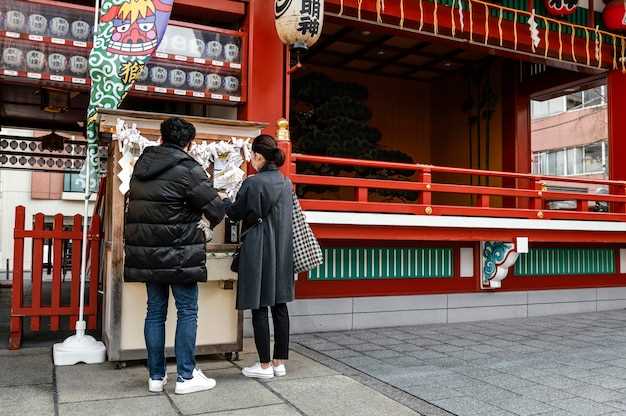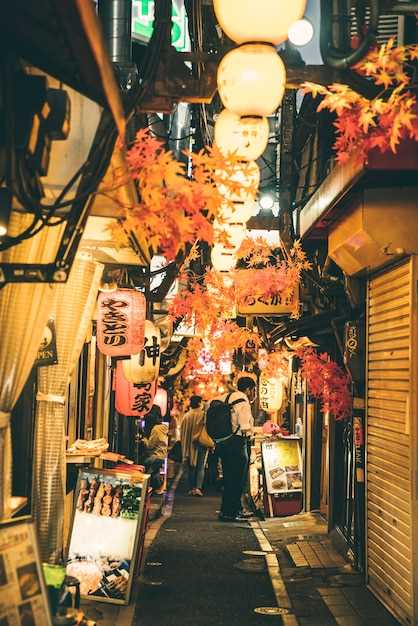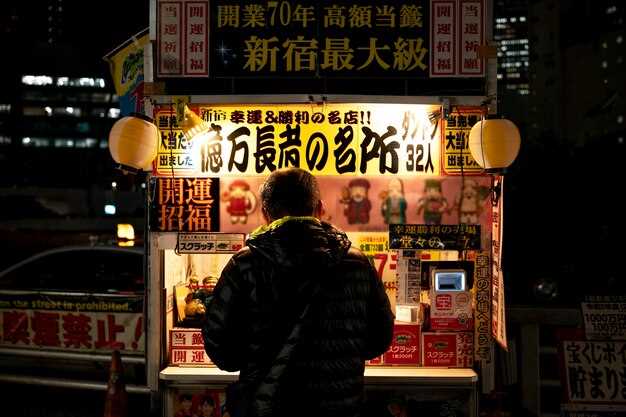
Start your visit with a 15-minute stroll from Sendagi Station to a tiny shop serving perfect menchi-katsu, then grab a high-end snack to kick off your relaxing morning in taito-ku.
Follow each lane through Yanaka’s preserved streets, where wooden storefronts and quiet courtyards create an intimate vibe. Their tiny kitchens push out snack size portions, letting you sample multiple flavors without rushing, because variety matters when you want to linger after hours in this district.
Indeed, the loop stays compact: begin near the Yanaka Ginza, wander toward shrines and shops, and end near Nippori for a coffee. Their offerings started as simple fried croquettes and evolved into a range of katsu and seasonal bites, including the classic konnyaku and menchi-katsu as a signature staple; if you crave variety, take a quick ride to kichijoji for a different street-food scene.
Each stop keeps the pace easy: order one bite at a time, then compare textures–crisp crust, soft filling, and a hint of pepper that remains on your tongue. Because these shops started as family-run stalls, their menus stay focused and approachable, letting yours and your companions’ tastes discover favorites without rushing.
Restrictions on hours and openings shift with the seasons, so check a current map before you go. Follow the signs along the lanes, stay curious, and after you finish, you’ll feel the neighborhood’s rhythm in every bite.
Practical Itinerary and Tasting Plan for Yanaka

Start your day with a brisk walk from Sendagi Station into Yanaka Ginza, then grab two skewers from a rustic stall and a hot tea to warm you after stepping off the humid morning air.
From there, plan a compact loop that hits a traditional storefront street, a tranquil shrine that is believed to bless childbirth, and a corner where mural panels echo kabuki motifs and samurai history. Exploring these blocks certainly reveals how the middle lanes connect the neighborhoods without rushing your pace.
Practical route and timing: begin around 9:30 with a first tasting of yakitori skewers (2–3 sticks) at a family-run grill, then move to a warm bowl of oden or miso, followed by a wagashi sweet from a shop that specializes in traditional confections. A final bite–perhaps mochi or senbei–wraps up near a park, where children can pause and watch street performances. Much of this sits within a few convenient spots and keeps you on a comfortable rhythm.
For families, this plan works well with children: choose kid-friendly snacks, pause often, and let little ones handle short waits at shops. Traditional storefronts stay welcoming, and rustic alleys offer safe spaces to poke around while learning how neighborhoods evolved through everyday travel and trade.
Logistics keep it easy: Yanaka is largely walkable, and you can rely on short transports between close spots if needed. Travel restrictions in the area are light, and the pacing leaves room for sudden discoveries–a rare shop, a quiet corner, or a small performance–so you can enjoy exploring without pressure while staying comfortable in humid weather.
Certainly this route delivers much more than meals: a glimpse into the culture, heritage, and quiet excitement that make Yanaka special, with spots that resonate from the samurai era to modern-day craft, all within easy reach of each other and wonderfully suited to a mid-morning to early-afternoon pace.
Plan a 2.5-Hour Walking Route Through Yanaka’s Historic Streets
Begin at Nippori Station’s north exit and head for Yanaka Ginza for a focused 2.5-hour loop that blends culinary bites with history dating back to Edo-era streets. In taito-ku, the route stays on a city-block scale, where backstreets tuck away gardens and Buddhist-inspired temples.
First stretch along the Yanaka Ginza arcade lasts 15–20 minutes, then you turn into a network of narrow lanes. The choice of turns varies by block, with some hidden courtyards tucked behind wooden storefronts. When you reach a Buddhist-inspired temple complex, pause and soak in the calm as the street noise fades–the frontlines of change here feel present, yet kind and welcoming.
Mid-route, stop at hinatomaru for a cup and pastry, then purchase a local snack to carry forward. The route here has a country-town vibe, and some spots were here for generations, offering stories dating back to childbirth rites and family life. You’ll see a line of old signs and friendly staff who were happy to share tips on what to visit next. This is where dating memories in the neighborhood meet modern cafés in Yanaka, giving you a sense of place you won’t miss.
Attention to where you pause matters: the route easily varies with weather and energy. Your choice includes a bakery, a handful of bars for a quick drink, and other small stops, all within easy reach. This route has been a favorite among visitors, and when you want to purchase something, look for shops with clear price signs to keep the activity smooth. The same lanes showcase temples, stores, and tiny galleries that are missed by hurried visitors but loved by locals.
Finish near the cemetery’s quiet entrance, then walk back toward Nippori through a final block of red-brick storefronts. This 2.5-hour plan in Yanaka reveals how a city preserves country life alongside modern touches, including hinatomaru and other spots. The route suits culinary lovers and history fans alike, whether you’re traveling solo or with a companion who is dating someone special. You’ll leave with an activity-rich impression of Yanaka’s historic streets.
What to Order at Taniya Udon: Signature Dishes and the Bounce Texture Explained
Your best start is the maruhatsu curry udon with pork cutlet: the noodles deliver a lively bounce, the curry scent fills the bowl, and the crust adds rustic crunch. This quaint destination in historic Shibuya draws night crowds and tracks that glow after sunset, making it a perfect stop before/after a stroll.
The menu offers diverse options, including a rare mushroom udon and a straightforward beef-cutlet version. Suzuki leads the kitchen, weaving Western influences into broths while keeping the core udon texture intentionally elastic. If you want a lighter start, try the mushroom udon before diving into heavier bowls.
Texture is the core of the experience. Noodles are kneaded and rested to develop chew, then boiled quickly to stay al dente. The surface absorbs curry or soy-glaze, while the core remains springy, creating the signature bounce that defines Taniya’s style.
Pairings and timing matter. After your bowl, stroll toward the tracks and grab a yakitori skewer or two from nearby stalls. The night air and smoky char complement the noodle base, making a complete dining loop that suits a night out in Shibuya.
To plan your visit: spend a little extra on a side dish or two for a richer experience. Check 7pmwebsite for exclusions and seasonal recipes before you go, so you know what to expect and what changes may occur.
| Signature Dish | Texture Note | Why Try It | Best Pairing |
|---|---|---|---|
| Maruhatsu Curry Udon with Pork Cutlet | Firm bounce; crisp crust; rich, glossy curry | Classic balance of sweet-spice curry and chewy noodles; quintessential taniya flavor | Yakitori skewers or a side of karaage |
| Beef-Cutlet Udon | Chewy noodles with a beefy bite | Hearty, satisfying; the beef fat adds depth | Cold beer or a light salad from the department-store dining floor nearby |
| Rare Mushroom Udon | Earthy, delicate chew; lighter broth | Seasonal and rare; highlights mushrooms in a clear broth | Green onion and shichimi for a peppery lift |
| Kakiage Tempura Udon | Crunchy vegetable fritter; smooth noodle base | Texture contrast that keeps every bite exciting | Extra napkin-friendly dining and a cup of hot tea |
Snack Stops: Must-Try Street Foods in Yanaka Ginza and Side Alleys
Start with a pocket-sized croquette and a crisp senbei from a long-standing Yanaka Ginza stall, then explore beyond the main street to side alleys. If you’re interested, line up near the train line and set a comfy pace, wearing comfortable shoes as you wander long public corridors of history and quaint shops.
Here are concrete stops to cover items from seafood skewers to pocket-sized sweets, with options that suit groups and solo explorers alike.
-
Pocket-sized croquettes and cutlets – A family stall on Yanaka Ginza serves fried potato croquettes and thin pork cutlets, typically 150–200 yen per item. Made fresh in small batches, they stay hot for a moment, so grab one and savor it while you watch local life unfold through a compact window.
-
Seafood skewers and tempura in a narrow alley – Grilled squid, shrimp, and fish-paste croquettes on a stick range 180–350 yen. Depending on the vendor, you can dip into tare sauce or salt; the aroma is nearly irresistible as you stroll onward.
-
Taiyaki and daifuku in quaint stalls – Taiyaki hot from the mold runs 150–200 yen, daifuku 120–180 yen. Please ask the cook to show you the steam puff behind a small window; watching it made is part of the charm.
-
Mini cafe bites and pocket-sized desserts – Seek a cozy cafe where you can relax with matcha latte or barley tea for about 200–350 yen. This option also lets you compare cuisines and plan the next stop, adding a relaxing pause to your tasting route.
-
Public street bites for groups – Pick 4–6 items to share; prices let you stay within 600–1200 yen per person. This approach fits both solo travelers and groups, letting you gradually explore Yanaka’s food culture within a friendly, public atmosphere.
Tip: wear comfortable shoes, pace yourself, and keep an eye on time–Yanaka’s long, narrow streets reward slow tasting and friendly chats with vendors along the way.
Landmarks to Pair with Bites: History, Temples, and Old-World Charm
Begin at Yanaka Ginza for a bite-first loop: check the stores along the brick-paved street, sample dough items, and pick a couple of specialties to bring home as gifts.
Then head to a serene temple precinct and Yanaka Cemetery; the density of old wooden houses and lantern-lit paths creates a calm backdrop beneath leafy canopies, with distance between stops usually short across areas, soon leading to the next landmark.
Exploring back lanes reveals hidden stores offering items and products tied to local specialties; note the address on storefronts and choose a few treasures to add to your collection.
Pause at a café near shimbasi to sip tea and try a gado-inspired bite; this stop adds contrast and a moment to relax.
october brings cool air that makes tours comfortable across seasons; plan 4-5 stops over a compact area and keep eyes open for stores selling dough, gifts, and products.
Tips for Comfort, Budget, and Accessibility During the Tour

Wear comfortable walking shoes and a light layer–Yanaka’s lanes are charming but uneven, and a mild evening can turn cool fast, so a compact jacket helps soon after sunset. Note a small umbrella or compact rain shell in the bag, just in case.
Choose a customized, guided option with a small size of 6–8 people to prioritize comfort and pace. Booking a group comes with a dedicated guide who speaks English or Japanese and helps you join the flow, skip long lines, and keep the pace enjoyable. Look for a meeting-point sign and confirm near the station pickup to minimize wandering between stops.
Costs vary by stall, so pick a tasting-focused plan. Seek a package that bundles several bites–takoyaki and other treats–along with a non-alcoholic drink to keep expenses predictable. If you’re traveling from brooklyn or melbourne, check early-bird rates; some guides offer customized itineraries at fixed prices, which helps with budgeting.
Accessibility matters: request a pace-friendly route and confirm elevator or ramp availability at entry points; ask the guide to plan a route that minimizes stairs and crowded crossings. Yanaka lanes are narrow, so joining a guided route with a plan helps you stay near the group. For parents with strollers, pick stroller-friendly segments and café stops near main stations, where sidewalks are flat and signs point to the next stop.
Health tips: carry a vaccination note if required for shops, and carry a small medical kit. Stay hydrated with bottled water; sipping a mild drink during breaks works well. If you like drinking, choose places with water refills or mocktails. Store your valuables in a zipped bag and ask for a safe meeting point sign if you split from the group.
An easy, comfortable pace lets you explore western and japanese flavors in Yanaka; you’ll find rare snacks, intimate yokocho alleys, and a queue of kabuki stalls. Your customized plan should include a couple of short breaks at cafés to sample gentle flavors and listen to stories from the guide about kabuki theater, neighborhood found histories, and the origin of takoyaki stalls. If you’re with friends, joining a small group keeps pace easy and lets you share photos and memories; more stories await.
Before you go, print a simple note with the meeting time, the guide’s contact, and the destination sign. Bring cash in yen, a compact bag, and a portable charger to keep devices powered while you explore. The tour offers careful pacing and plenty of time for conversations, photo stops, and culinary bites, so you can savor Yanaka at a relaxed tempo.
